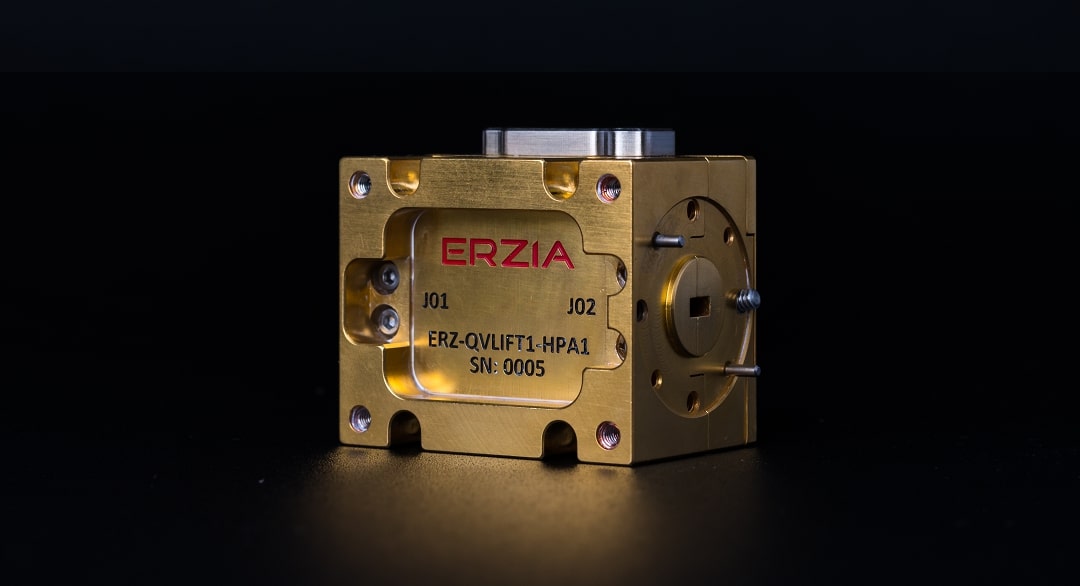Posted: Tuesday, December 15, 2020
2020 was a remarkable year for innovation in the satellite communications arena. The QV-LIFT program was completed, bringing great promise for the future. QV-LIFT is an EU-sponsored Horizon2020 Research and Innovation Action committed to increasing the maturity level of key satellite communication technologies and to contributing to a more competitive positioning of SatCom European manufacturers in the marketplace.
How Did QV-LIFT Come About?
It is a well-known fact that the next generation will demand higher throughput architectures for ground Segment Technology and Q/V band Terabit SatCom systems. This increasing demand is also leading to the demand for more bandwidth and increases in the transmission frequency required.
The QV-LIFT three-year project was started in 2017 to develop Ground Segment Technology for the future Q/V band Terabit SatCom systems. Q/V band frequencies (40 GHz for downlink and 50 GHz for uplink) offer larger bandwidth for feeder links and for segments that require high data rates. The project provided key Ground Segment technologies and strategies that support Q/V feeder links, filling a technological gap on components and terminals with good performance at Q/V band.
QV-LIFT Objectives
Some of the objectives of the project were to develop GaN power amplifier MMICs at V band with up to 5W RF power output; V band power combining High Power Amplifier based on GaN technology targeting up to 15 W power output; high-performance Block Up Converter operating in the V band; Low Noise Block down converter operating in the Q band; Q/V band, Tx/Rx, single aperture antennas for the mobile and fixed terminals; Q/V band TX/RX single aperture terminal suitable for airborne applications; the first Q/V band Smart Gateways Management System able to counteract the propagation impairments removing one of the main obstacles to deployment of the future Q/V band Ground Segment; links between academia, large companies and SMES; full and stable integration of SMEs into the SatCom value chain by developing know-how in key areas that are recognized as strategic for the future SatCom market (MMIC GaN integrated circuits, Q/V band RF components, Ground Segment Infrastructures).
One of the top objectives of the project was the development of the QV-LIFT High Power Amplifier (HPA), based on a Gallium Nitride based power amplifier MMIC, which can be utilized at ground terminals transmitting at V-band. A test environment using the operational payload “Aldo Paraboni” on Alphasat Satellite and its Ground Stations made it possible to test a full satellite link between gateway and user terminal. This required high performance, high frequency of operation, and new technologies to realize main RF components.
“Our target was indeed very ambitious in terms of output power taking into account the limitations of the technology at that moment.” said Noelia Santos, RF & Microwave Engineer at ERZIA involved in this project.
ERZIA Makes Major Contribution to QV-LIFT
ERZIA joined the QV-LIFT project providing The RF Front-end for both the mobile and Earth terminals, including the HPA, BUC and LNB in Q/V bands. ERZIA was chosen because of their expertise in RF/microwave devices, space, critical applications, and Ground Support Equipment.
ERZIA has a strong background in space and R&D projects, as well as in RF/microwave amplifiers, with over 100 standard amplifier modules in their portfolio. The company has also developed a number of customized RF devices, including amplifiers for space-based platforms. The expertise in Electrical Ground Support Equipment for Space applications is also an important asset of the company, especially in RF and Power Ground Support Equipment.
QV-LIFT’s need for a High Power Amplifier (HPA) based on a State of the art Gallium Nitride (GaN) power amplifier MMIC was satisfied by ERZIA with a complete HPA including a 4-way combiner capable to deliver a reliable and consistent output power higher than 37 dBm across the entire band of operation (48 GHz +/-250MHz).
The Aeronautical and Earth terminals also carried state-of-the-art subsystems designed and manufactured by ERZIA, such as a V band Block Up Converter (BUC), including the complete HPA integrated in the same module and the Q band Low Noise Block (LNB) converter that enable the communication in both bands.
The Future of Q/V
Noelia Santos of ERZIA stated, “It will be possible to get higher output power levels at higher frequencies with the ongoing development of GaN technology. In the near future Q/V and in general very high frequencies will be adopted in commercial systems. This will still require a lot of effort from industry to develop new products and technologies. In the market, the power level is increasing every two years.”
And Roberta Campo of Eutelsat was very hopeful for the future: “During the last three years, Eutelsat has launched a Q/V-band experimental payload and has ordered a next-generation VHTS satellite system, named KONNECT VHTS, due to enter into service in 2022, which will make use of advanced smart Q/V bands gateway management techniques.”
Congratulations to ERZIA and the entire QV-LIFT team for their breakthrough contributions to satellite communications!
To learn more about QV-LIFT project visit https://www.qvlift.eu.
To learn more about ERZIA please visit www.erzia.com.

Share
